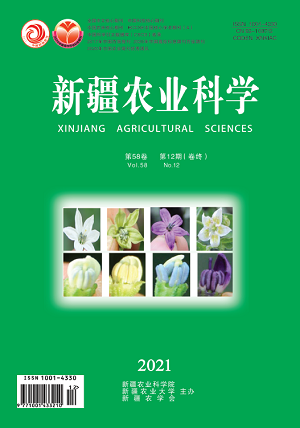【Objective】 The project aims to choose the herbicides with high herbicidal activity to Descurainia sophia, Bromus japonica, Aegilops tauschii and Alopecurus myosuroides in wheat field in Hebei Province. 【Methods】 Glasshouse pot experiments were conducted to systematically determine the susceptibility of tested weeds to herbicides. 【Results】 The GR50 values of carfentrazone-ethyl, florasulam, pyroxsulam, mesosulfuron-methyl, MCPA-Na, tribenuron-methyl and clodinafop-propargyl for Descurainia sophia were 0.26, 0.72, 1.03, 1.87, 3.74, 7.67, and 177.63 g a.i./hm 2, respectively. The GR50 values of flucarbazone-Na and fenoxaprop-p-ethyl were not determined, because their control effect on Descurainia sophia was lower. The GR50 values of pyroxsulam, mesosulfuron-methyl, flucarbazone-Na, florasulam, tribenuron-methyl, carfentrazone-ethyl and MCPA-Na for Bromus japonica were 1.73, 3.95, 16.21, 17.14, 132.51, 221.48, 4,560.31 g a.i./hm 2, respectively. The GR50 values of the other two agents were not determined. The GR50 value of mesosulfuron-methyl, pyroxsulam and MCPA-Na for Aegilops tauschii was 7.02, 274.29, 16,601.09 g a.i. /hm 2. The GR50 values of the other six agents were not determined. The GR50 values of clodinafop-propargyl, mesosulfuron-methyl, pyroxsulam, fenoxaprop-p-ethyl, tribenuron-methyl, florasulam, flucarbazone-Na and MCPA-Na for Alopecurus myosuroides were 4.97, 6.73, 6.75, 91.51, 138.78, 177.85, 202.04, 6,995.99 g a.i./hm 2, respectively. The GR50 values of carfentrazone-ethyl were not determined. 【Conclusion】 Mesosulfuron-methyl can simultaneously control grass weeds: Aegilops tauschii, Bromus japonica, Alopecurus myosuroides, and broad-leaved weed Descurainia sophia. Pyroxsulamcan can simultaneously control Bromus japonica, Alopecurus myosuroides, and Descurainia sophia. Flucarbazone-Na can control Bromus japonica. Clodinafop-propargyl and fenoxaprop-p-ethyl can control Alopecurus myosuroides. Carfentrazone-ethyl, florasulam, MCPA-Na and tribenuron-methyl can control Descurainia sophia.

